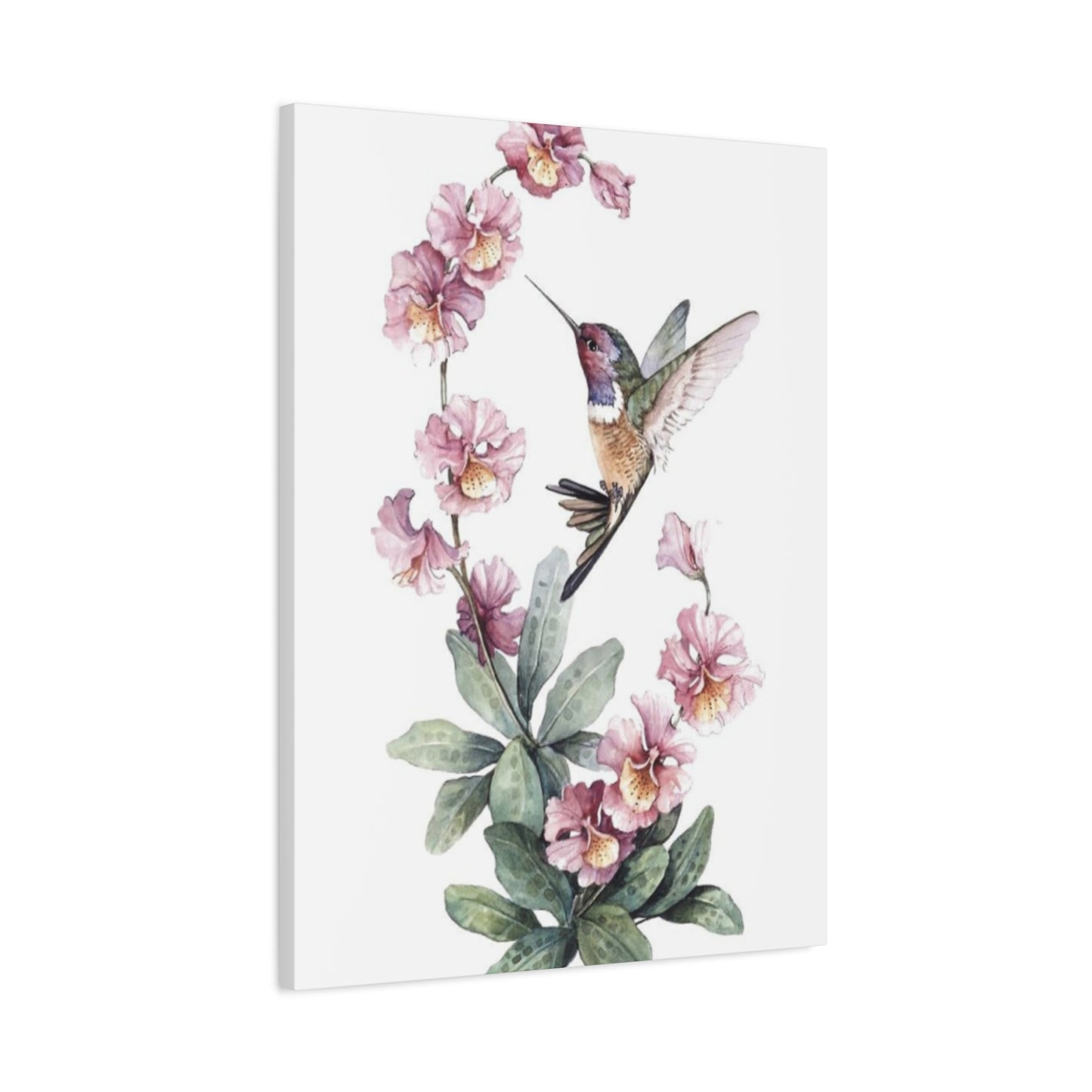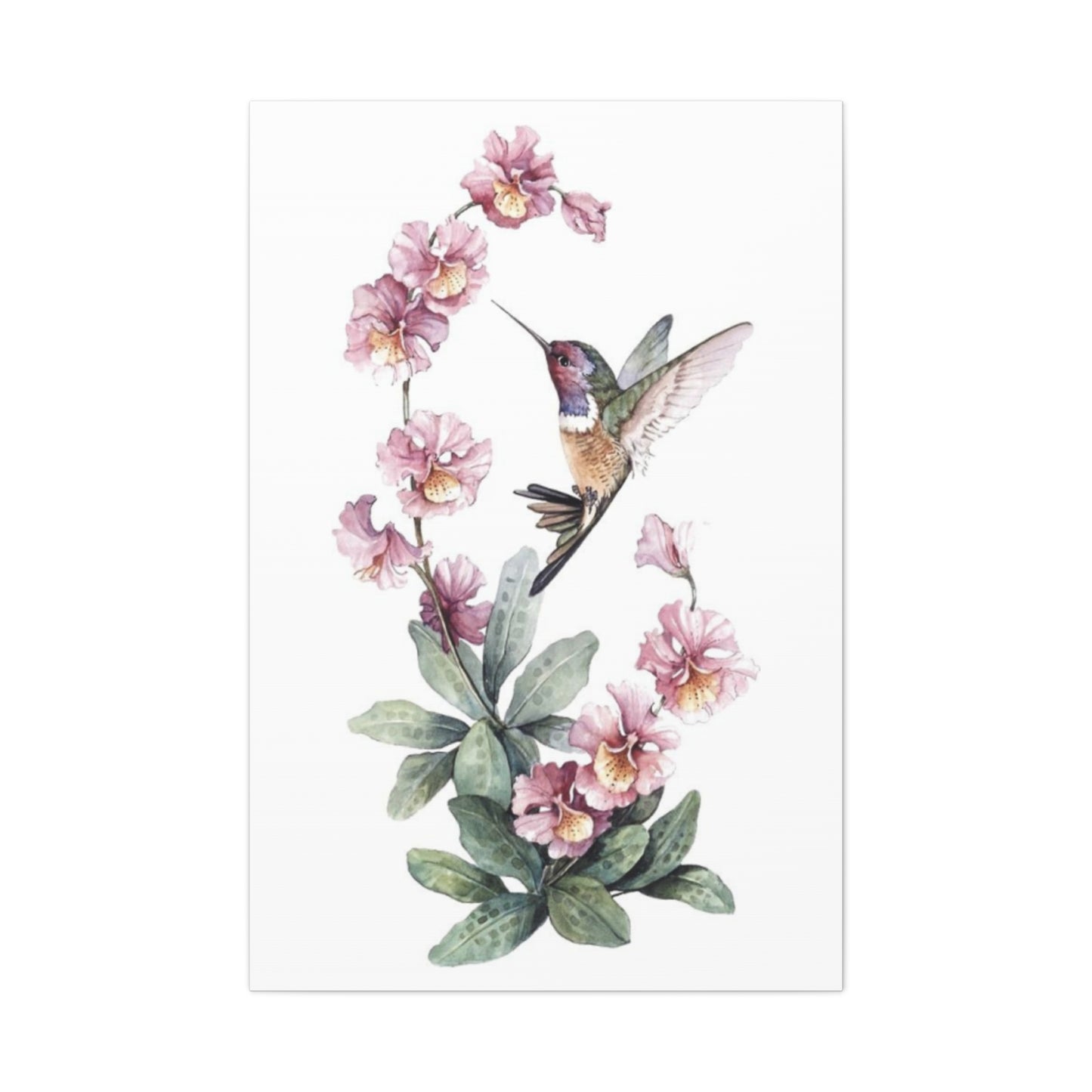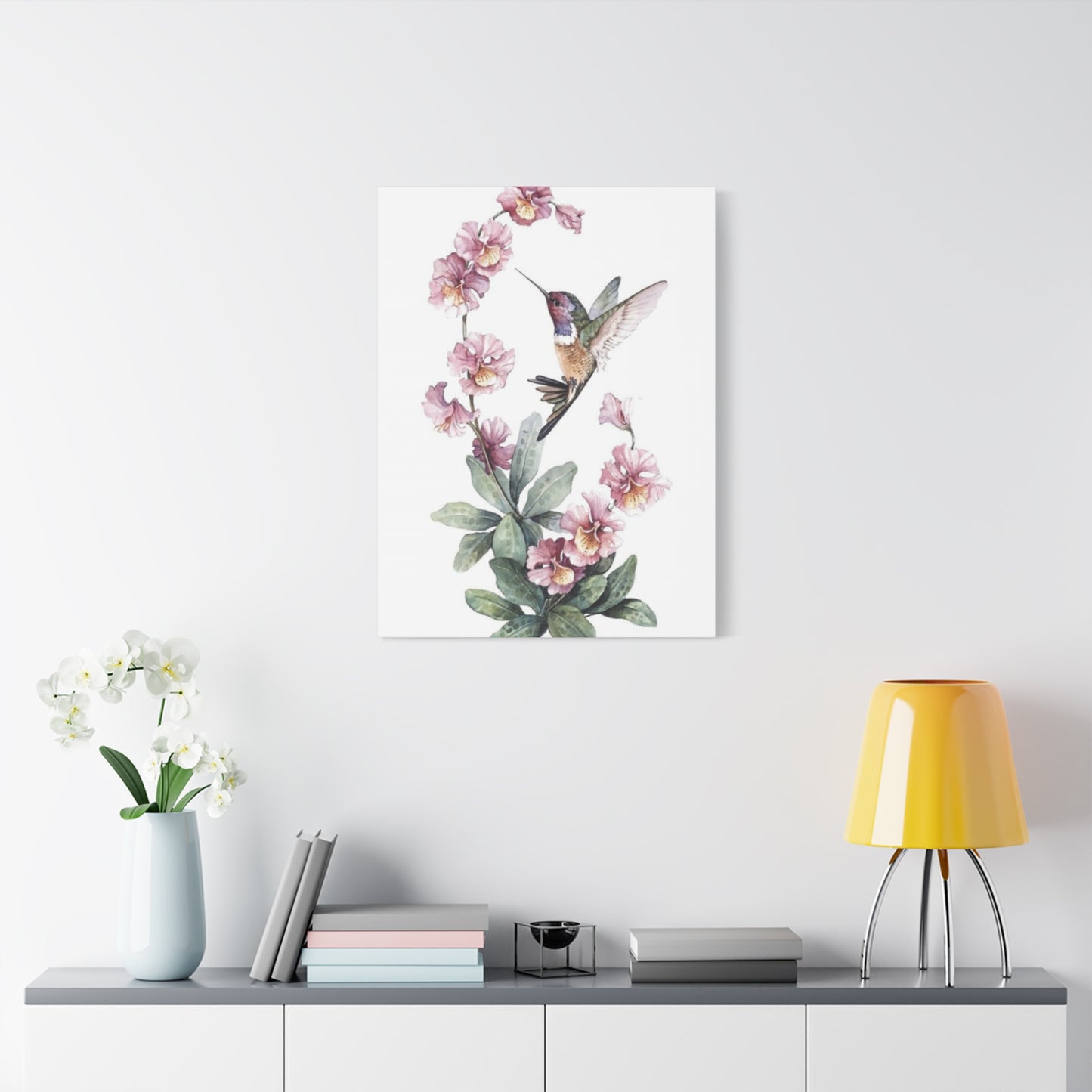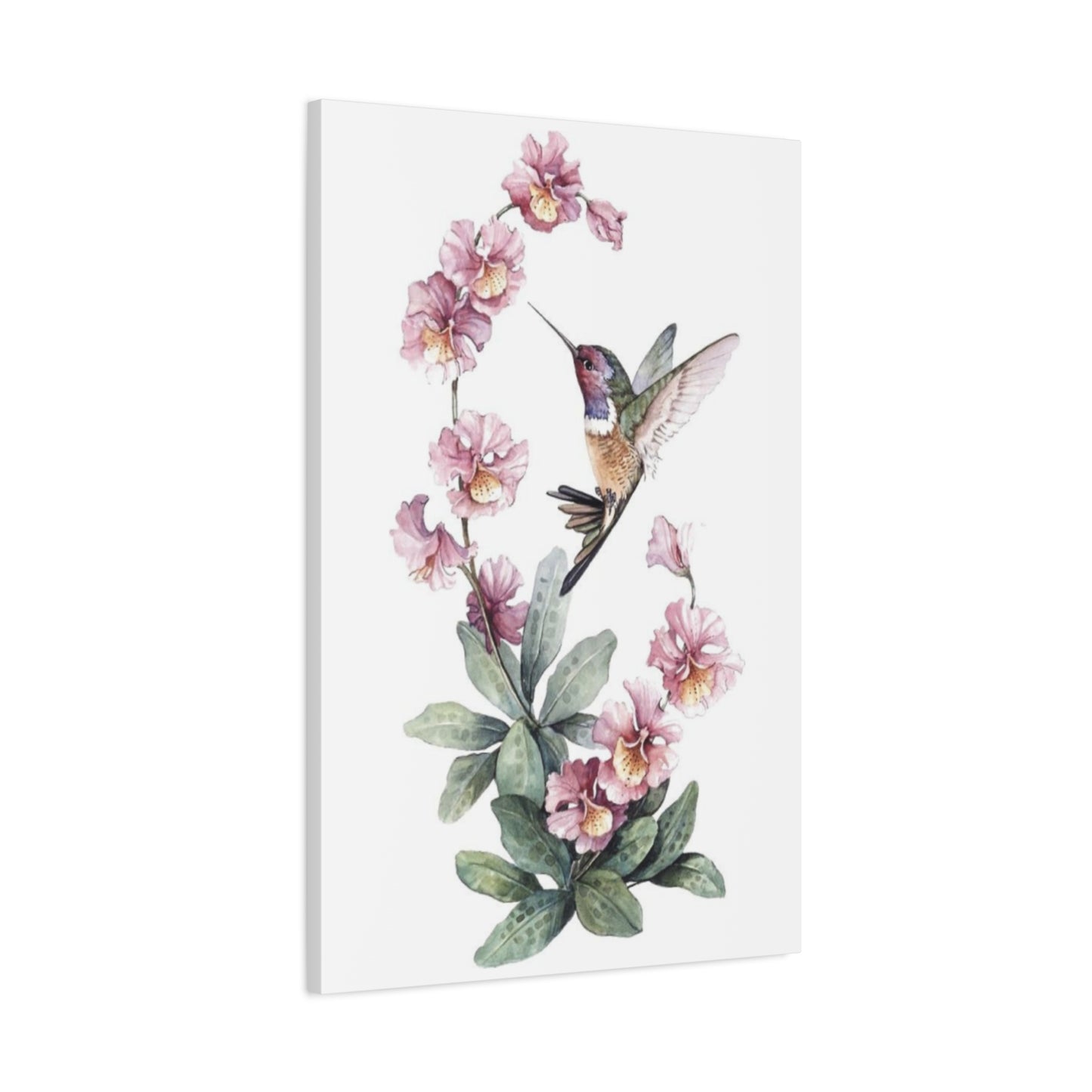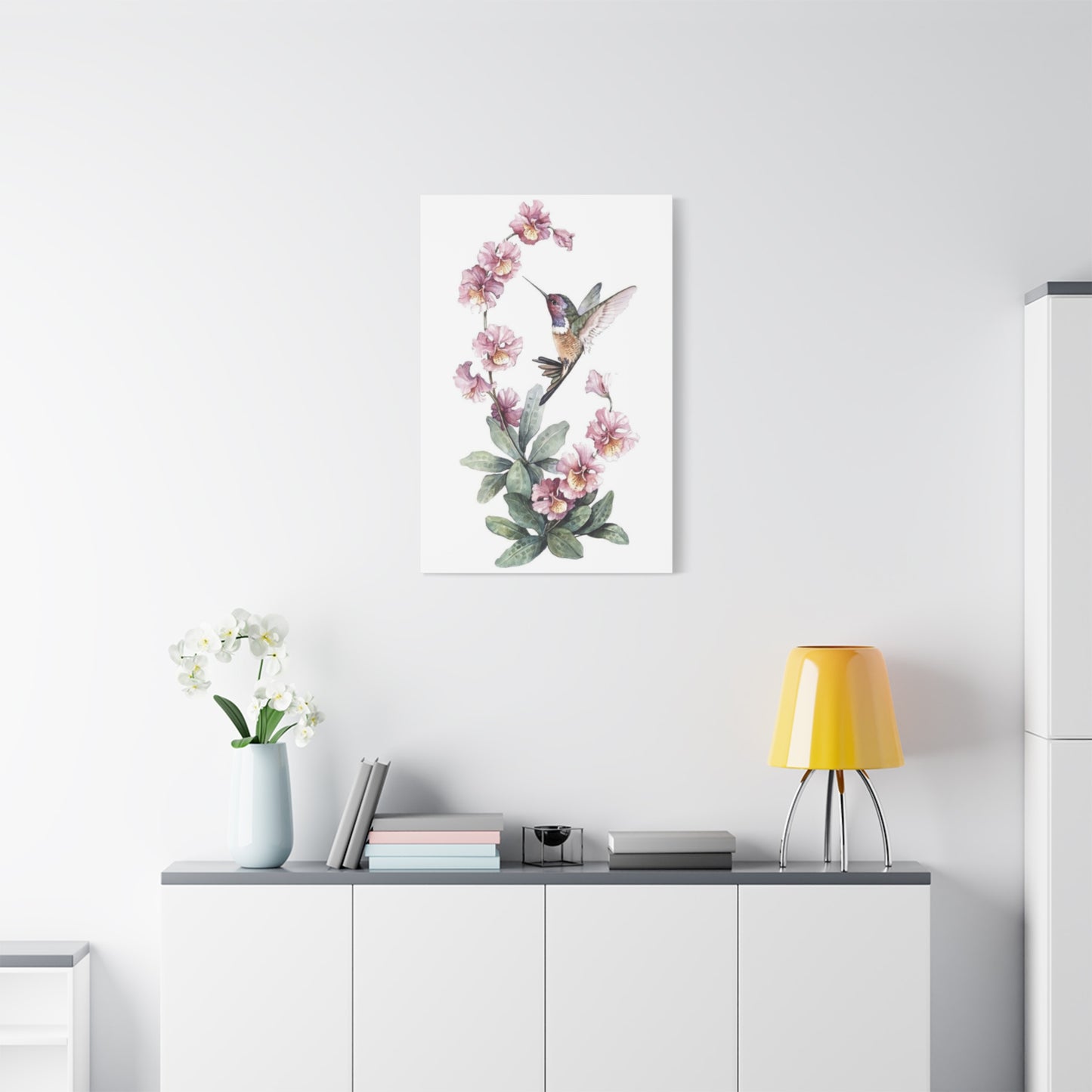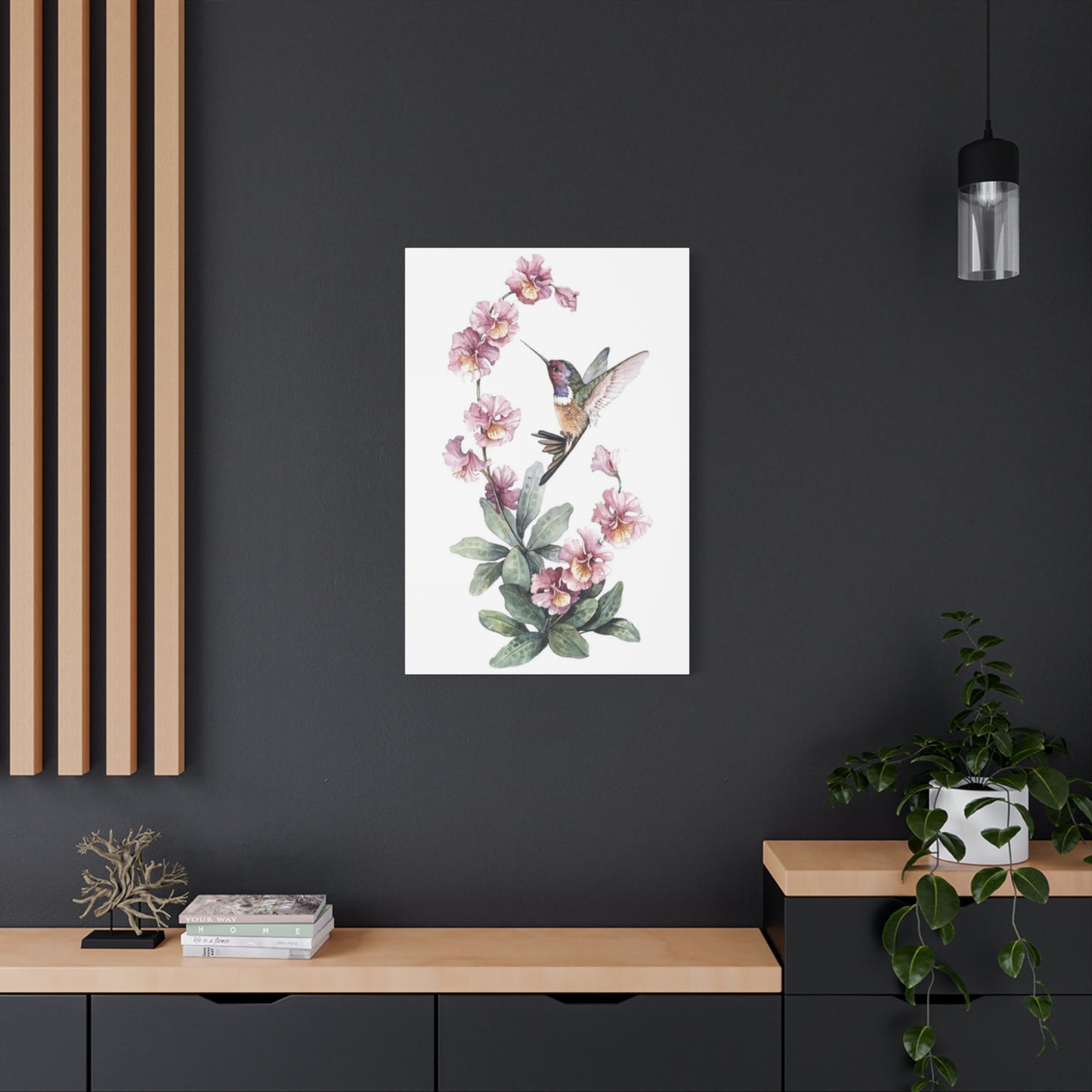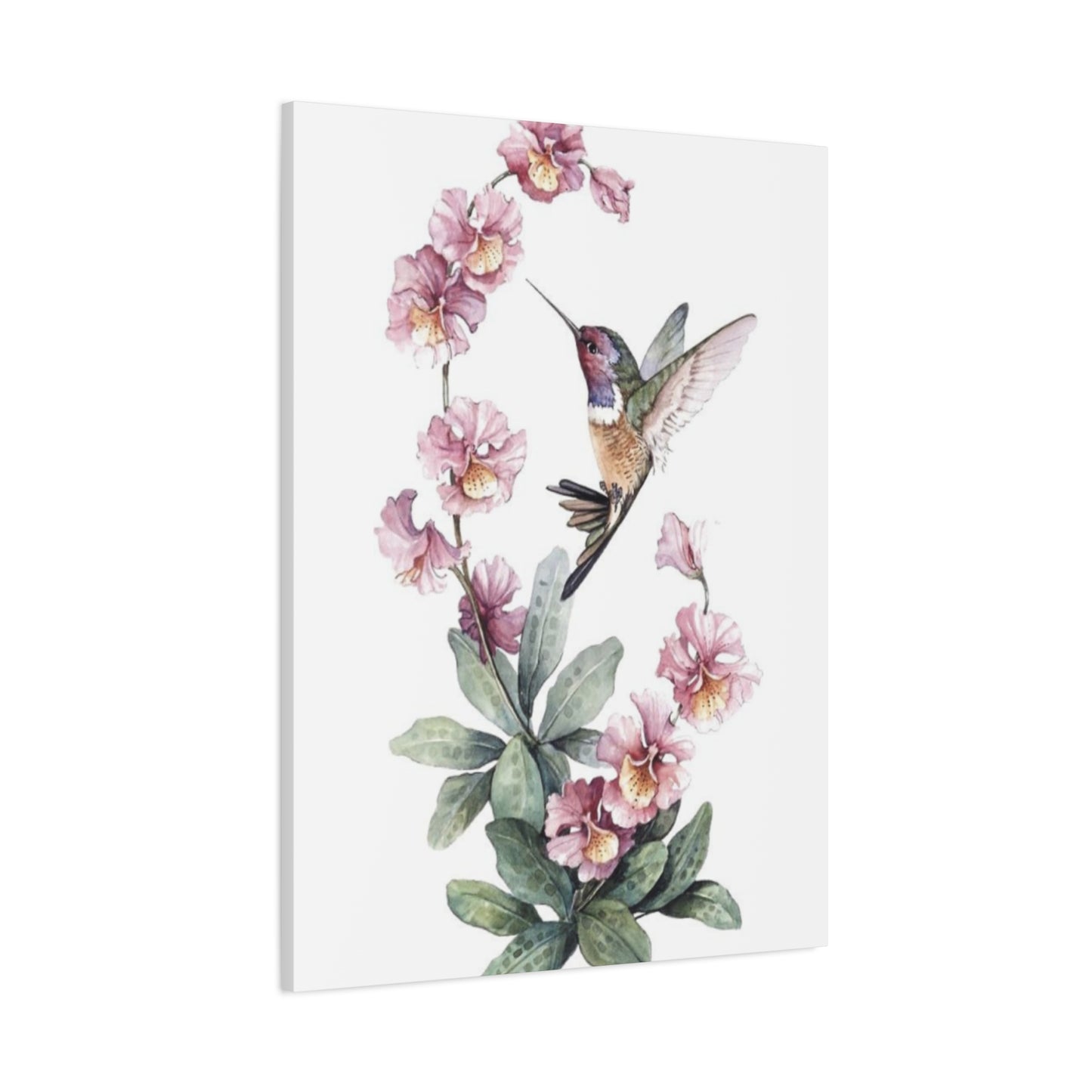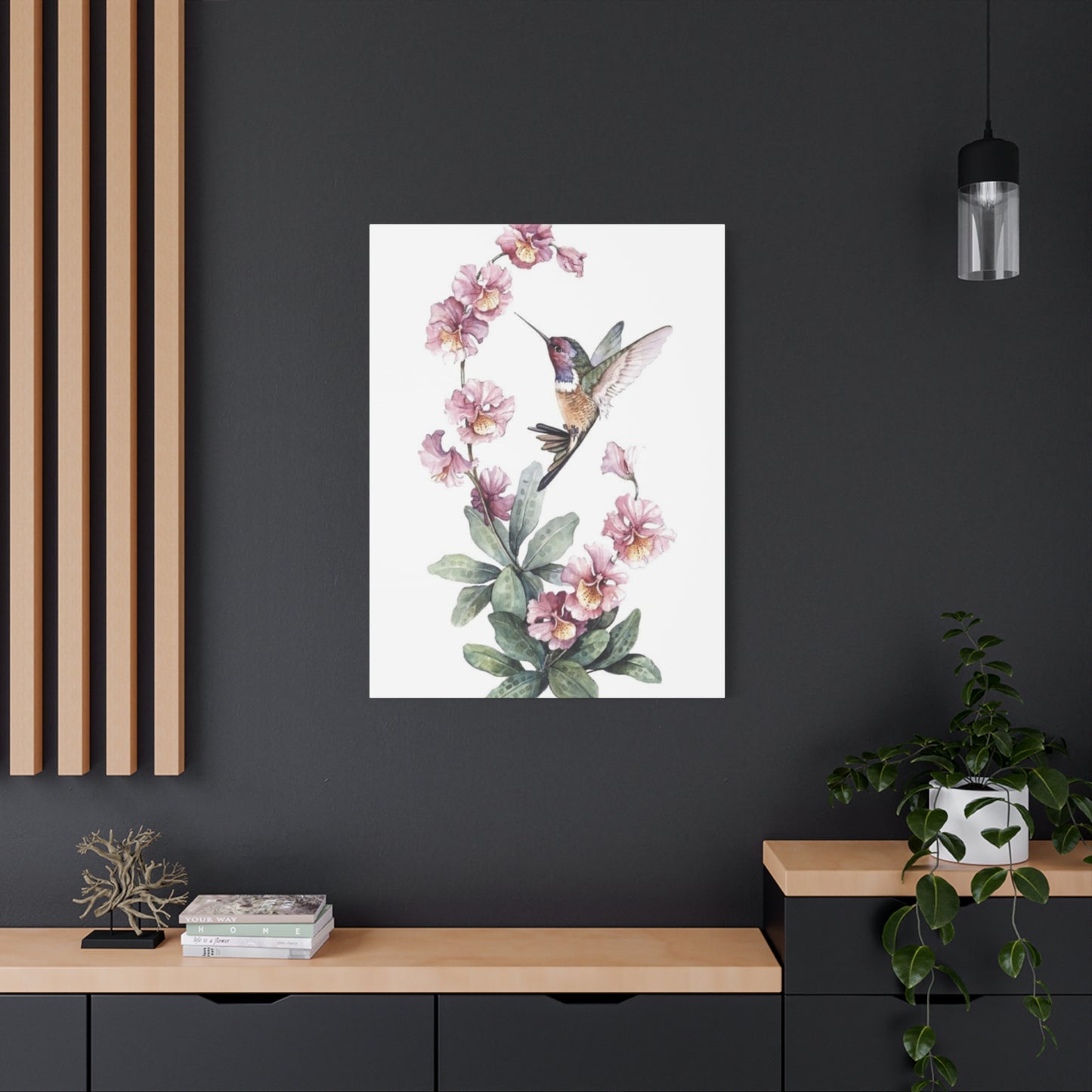Hummingbird Wall Art painting: Capturing Nature's Most Graceful Creatures
The delicate beauty of hummingbirds has captivated artists and nature lovers for centuries. These remarkable creatures, with their iridescent feathers and incredible flying abilities, represent some of the most enchanting subjects in the world of visual arts. When transformed into stunning wall art, hummingbirds bring an unparalleled sense of grace, movement, and natural wonder into any living environment.
The fascination with hummingbird wall art stems from the unique characteristics of these extraordinary birds. Their ability to hover in mid-air, fly backwards, and move with lightning speed creates a mesmerizing spectacle that artists strive to capture on canvas. The vibrant colors of their plumage, ranging from emerald greens to ruby reds and sapphire blues, provide endless inspiration for creating breathtaking artistic pieces.
Contemporary artists have developed various techniques to represent these magnificent creatures in wall art, from hyperrealistic paintings that showcase every minute detail of their feathers to abstract interpretations that focus on the essence of their movement. The popularity of hummingbird wall art continues to grow as people seek to bring elements of nature into their homes, creating peaceful and inspiring environments that celebrate the beauty of the natural world.
Magnificent Miniatures Suspended in Flight
The art of depicting hummingbirds in their natural state of suspended animation presents unique challenges and opportunities for artists. These tiny aerial acrobats, weighing no more than a few grams, possess an otherworldly quality when captured at the precise moment of hovering. Artists who specialize in hummingbird wall art must master the delicate balance between accuracy and artistic interpretation to create pieces that truly capture the essence of these remarkable birds.
The technical aspects of creating hummingbird wall art require exceptional attention to detail. The artist must understand the anatomy of these birds, from the rapid beating of their wings to the precise positioning of their bodies during flight. The challenge lies in representing motion in a static medium, requiring artists to use various visual techniques such as implied movement, strategic color placement, and dynamic composition to suggest the constant motion that defines these creatures.
Professional artists often spend countless hours studying hummingbirds in their natural habitat, observing their feeding patterns, flight behaviors, and interactions with flowers. This deep understanding translates into wall art that not only looks beautiful but also accurately represents the true nature of these fascinating birds. The result is artwork that resonates with viewers on both aesthetic and emotional levels, creating connections between the observer and the natural world.
The process of creating hummingbird wall art involves multiple stages, from initial sketching and color planning to the final application of paint or other media. Artists must carefully consider the lighting, composition, and background elements that will complement the hummingbird without overwhelming its delicate presence. The most successful pieces achieve a harmonious balance where every element works together to create a cohesive and captivating visual experience.
Capturing the Poetry of Perpetual Motion
The representation of hummingbird flight in wall art transcends mere documentation, evolving into a form of visual poetry that speaks to the soul. Artists who dedicate themselves to this subject matter understand that they are not simply creating pictures of birds, but rather translating the lyrical quality of hummingbird movement into a language that can be appreciated and understood by viewers from all walks of life.
The poetic nature of hummingbird wall art lies in its ability to freeze moments of incredible beauty and grace. When a hummingbird hovers near a flower, there is a ballet-like quality to its movements that seems to defy the laws of physics. Artists who successfully capture this quality create pieces that inspire wonder and contemplation, inviting viewers to pause and appreciate the miraculous nature of these small but mighty creatures.
Color plays a crucial role in creating the poetic quality of hummingbird wall art. The iridescent nature of hummingbird feathers means that their appearance changes dramatically depending on the angle of light and the observer's position. Skilled artists use this characteristic to their advantage, employing various painting techniques to create the illusion of shifting colors and luminous plumage that seems to glow with inner light.
The emotional impact of well-executed hummingbird wall art cannot be understated. These pieces often evoke feelings of peace, joy, and connection with nature. The sight of a beautifully rendered hummingbird can transport viewers to gardens filled with flowers, where the gentle hum of wings creates a soundtrack of tranquility and natural harmony.
Many collectors of hummingbird wall art report that these pieces bring a sense of calm and positive energy to their homes. The association of hummingbirds with nectar, flowers, and gardens creates subliminal connections to growth, sweetness, and the cyclical nature of life. This psychological aspect adds another layer of meaning to hummingbird wall art, making it more than just decorative objects but rather sources of daily inspiration and emotional nourishment.
Botanical Companions in Artistic Harmony
The relationship between hummingbirds and flowering plants provides rich material for artists creating wall art that celebrates both subjects. This symbiotic relationship, where hummingbirds feed on nectar while simultaneously pollinating flowers, represents one of nature's most beautiful examples of mutual benefit. Artists who incorporate floral elements into their hummingbird wall art create compositions that tell complete stories about the interconnectedness of natural systems.
The selection of appropriate flowers to accompany hummingbirds in wall art requires knowledge of which plants actually attract these birds in nature. Trumpet-shaped flowers in vibrant reds, oranges, and pinks are particularly favored by hummingbirds, and these same flowers translate beautifully into artistic compositions. Artists often feature bee balm, cardinal flowers, trumpet vine, and fuchsia alongside their hummingbird subjects, creating authentic representations that reflect real ecological relationships.
The artistic challenge of combining hummingbirds with floral elements lies in creating compositions where neither subject overwhelms the other. Successful hummingbird wall art achieves a delicate balance where the flowers provide context and visual interest without detracting from the bird's prominence. This requires careful attention to color harmony, scale relationships, and compositional flow to ensure that all elements work together cohesively.
The seasonal aspects of hummingbird and flower relationships provide artists with numerous opportunities for creating themed collections. Spring compositions might feature hummingbirds with early blooming flowers like azaleas and rhododendrons, while summer pieces could showcase combinations with bee balm and cardinal flowers. These seasonal variations allow collectors to create rotating displays that reflect the changing rhythms of the natural world throughout the year.
Masterful Techniques for Avian Elegance
The creation of exceptional hummingbird wall art requires mastery of various artistic techniques specifically adapted to capture the unique characteristics of these remarkable birds. Artists working in this specialized field must develop skills that go beyond traditional bird painting, incorporating methods that can effectively represent the unique challenges posed by hummingbird anatomy, movement, and coloration.
One of the most critical techniques in hummingbird wall art is the representation of translucent and iridescent qualities. Hummingbird wings, when extended, have a translucent quality that allows light to pass through them, creating subtle color variations and transparency effects. Artists must learn to paint these qualities convincingly, often using layering techniques and careful attention to value relationships to achieve realistic results.
The challenge of representing rapid wing movement in static wall art has led to the development of various artistic conventions. Some artists choose to blur the wing edges to suggest motion, while others paint multiple wing positions to show the range of movement. The most successful approaches often combine these techniques with careful attention to the surrounding environment, using visual cues like disturbed flower petals or flowing nectar to reinforce the sense of active movement.
Color mixing and application techniques for hummingbird wall art must account for the complex nature of iridescent plumage. Artists often use metallic paints, interference colors, and layering techniques to achieve the characteristic shimmer of hummingbird feathers. The key lies in understanding how light interacts with iridescent surfaces and translating this knowledge into paint application methods that create convincing visual effects.
The background treatment in hummingbird wall art requires special consideration to ensure that the delicate subjects remain the focal point. Artists must balance the need for environmental context with the risk of creating cluttered or distracting compositions. Techniques such as atmospheric perspective, selective focus, and color temperature variations help create backgrounds that support rather than compete with the hummingbird subjects.
Illuminated Feathers and Radiant Displays
The luminous quality of hummingbird feathers presents both opportunities and challenges for artists creating wall art featuring these magnificent creatures. The way light interacts with hummingbird plumage is unlike any other bird species, creating effects that range from subtle color shifts to brilliant metallic displays. Understanding and representing these optical phenomena is essential for creating convincing and captivating hummingbird wall art.
The science behind hummingbird iridescence involves microscopic structures in their feathers that refract and reflect light in specific ways. Artists who wish to create authentic-looking hummingbird wall art must understand these principles and develop techniques that can simulate these natural optical effects using traditional art materials. This often involves studying real hummingbird specimens under various lighting conditions to observe how colors change and shift.
Different lighting scenarios create dramatically different appearances in hummingbird plumage, and successful wall art captures these variations to create dynamic and engaging compositions. Morning light might emphasize the golden tones in a hummingbird's throat patch, while afternoon sun could highlight the emerald brilliance of back feathers. Artists who incorporate these lighting effects into their work create pieces that seem to glow with inner radiance.
The emotional impact of well-rendered iridescent effects in hummingbird wall art cannot be overstated. Viewers often report being mesmerized by pieces that successfully capture the luminous quality of hummingbird feathers, describing feelings of wonder and connection with the natural world. This emotional resonance makes such pieces particularly valuable as focal points in home environments where people seek inspiration and tranquility.
Technical considerations for achieving luminous effects in hummingbird wall art include the use of underpainting techniques, glaze applications, and careful attention to reflected light sources. Artists must also consider the viewing environment where their work will be displayed, ensuring that the lighting effects will be visible and effective under typical home lighting conditions.
Dynamic Movement Frozen in Time
The representation of motion in hummingbird wall art requires sophisticated understanding of both avian biomechanics and artistic principles. These birds move in ways that seem to defy gravity, hovering effortlessly in mid-air, darting between flowers with incredible precision, and even flying backwards when necessary. Capturing this extraordinary mobility in static wall art demands creative solutions that suggest movement while maintaining visual clarity and aesthetic appeal.
Artists studying hummingbird movement often use high-speed photography and video analysis to understand the mechanics of hummingbird flight. This research reveals the complex figure-eight pattern of wing movement that enables hovering flight, the rapid directional changes that allow precise maneuvering, and the subtle body positioning that maintains balance during feeding. This technical knowledge informs artistic decisions about pose selection and compositional elements.
The challenge of suggesting rapid wing movement in wall art has led to various artistic conventions, each with its own visual impact and emotional resonance. Some artists choose to render wings with motion blur effects, creating streaks of color that suggest the rapid beating motion. Others prefer to show wings at specific positions in the flight cycle, frozen at moments of maximum extension or compression to capture the power and precision of hummingbird flight.
Environmental elements play crucial roles in reinforcing the sense of movement in hummingbird wall art. Flower petals caught in the downdraft from beating wings, pollen grains suspended in the air, and the gentle sway of nearby foliage all contribute to creating compositions that feel alive and dynamic. These subtle details often make the difference between static representations and artwork that truly captures the essence of hummingbird vitality.
Celebrating Nature's Swiftest Artists
Hummingbirds represent some of nature's most accomplished aerial artists, and wall art celebrating these creatures acknowledges their role as living masterpieces of evolutionary engineering. Their ability to perform complex aerial maneuvers with precision and grace has inspired artists to create works that not only document their appearance but also celebrate their remarkable abilities and ecological importance.
The speed and agility of hummingbirds have made them symbols of efficiency, determination, and the ability to find beauty in the midst of constant motion. These symbolic associations add layers of meaning to hummingbird wall art, making these pieces popular choices for environments where people seek motivation, inspiration, or reminders of life's precious moments.
Artists who specialize in hummingbird wall art often develop deep appreciation for the subjects they portray, leading to artwork that goes beyond surface beauty to explore themes of persistence, adaptation, and the delicate balance of natural ecosystems. This deeper understanding is often evident in the composition, color choices, and overall emotional tone of their work.
The technical challenges of representing speed and precision in visual art have pushed artists to develop innovative approaches to composition and execution. Some choose to include multiple images of the same bird showing different positions in a flight sequence, while others focus on single moments of particular intensity or beauty. The most successful pieces often find ways to suggest the bird's incredible capabilities while maintaining visual harmony and aesthetic appeal.
The cultural significance of hummingbirds varies across different societies, but their association with joy, beauty, and the ephemeral nature of life appears consistently across many cultures. Artists creating hummingbird wall art often tap into these universal themes, creating pieces that resonate with viewers regardless of their cultural background or previous experience with these remarkable birds.
Chromatic Brilliance in Feathered Form
The spectacular color displays of hummingbirds provide artists with some of nature's most challenging and rewarding subjects for wall art creation. The range of hues found in hummingbird plumage spans the entire visible spectrum, from deep purples and blues to brilliant greens, oranges, and reds. This chromatic diversity, combined with the metallic and iridescent qualities of their feathers, creates opportunities for artists to explore color relationships and optical effects that are rarely found in other subjects.
Different hummingbird species exhibit distinct color patterns and combinations, giving artists numerous options for creating varied collections of wall art. The ruby-throated hummingbird, with its emerald back and brilliant red throat patch, presents different artistic challenges than the Anna's hummingbird with its rose-colored head and neck. Understanding these species-specific characteristics allows artists to create accurate representations while exploring different color harmonies and compositional possibilities.
The seasonal changes in hummingbird appearance add another dimension to color considerations in wall art creation. Male hummingbirds often display their most brilliant plumage during breeding season, while females and juveniles typically show more subdued coloration. Artists can use these variations to create pieces that reflect different times of year or different aspects of hummingbird behavior and biology.
The interaction between hummingbird colors and environmental settings provides rich material for artistic exploration. The way emerald green feathers contrast with red flowers, or how purple throat patches complement yellow stamens, creates natural color harmonies that artists can emphasize and enhance in their wall art compositions. These color relationships often form the foundation for successful pieces that feel both natural and aesthetically pleasing.
Technical considerations for achieving accurate color representation in hummingbird wall art include understanding color temperature, saturation levels, and the effects of different lighting conditions on perceived color. Artists must also consider how their chosen medium and support materials will affect color appearance, ensuring that their artistic vision translates effectively to the finished piece.
Tranquil Moments in Natural Settings
While hummingbirds are known for their constant motion and high energy, they also experience moments of relative stillness that provide different opportunities for artistic interpretation. These quieter moments, when hummingbirds perch on branches between feeding sessions or during early morning hours, offer artists chances to explore different aspects of their subjects' personalities and behaviors.
The artistic challenge of capturing tranquil hummingbird moments lies in maintaining visual interest while depicting relatively static poses. Artists must rely more heavily on subtle details, lighting effects, and compositional elements to create engaging pieces that reveal different facets of hummingbird character. These pieces often emphasize the delicate beauty of hummingbird proportions and the intricate patterns of their plumage.
Environmental context becomes particularly important in wall art depicting peaceful hummingbird moments. The choice of perching locations, surrounding vegetation, and atmospheric conditions all contribute to the overall mood and message of the piece. Artists might choose dewy morning settings to emphasize freshness and renewal, or golden evening light to create feelings of warmth and contentment.
The emotional impact of tranquil hummingbird wall art often differs significantly from pieces emphasizing motion and activity. Viewers frequently report feeling calmed and centered by these quieter representations, making them particularly suitable for bedrooms, meditation areas, or other locations where peaceful energy is desired.
The technical approach to creating tranquil hummingbird wall art often emphasizes subtle color transitions, soft edges, and careful attention to atmospheric effects. Artists may use glazing techniques to create luminous backgrounds or employ careful value control to direct attention to specific areas of the composition. These technical choices support the overall mood and help create pieces that invite contemplation and quiet appreciation.
Expressive Interpretations of Avian Beauty
Beyond realistic representation, many artists approach hummingbird wall art from expressive or interpretive perspectives that prioritize emotional impact over strict accuracy. These approaches allow for greater artistic freedom while still celebrating the essential qualities that make hummingbirds such compelling subjects. Expressive hummingbird wall art can range from loose, impressionistic treatments to bold, stylized interpretations that emphasize particular aspects of these remarkable birds.
Impressionistic approaches to hummingbird wall art often focus on capturing the feeling and energy of these creatures rather than precise anatomical details. Artists working in this style might use loose brushwork to suggest movement, vibrant color combinations to emphasize the joy associated with hummingbird encounters, or atmospheric effects to create dreamlike qualities that transport viewers into magical natural settings.
Abstract interpretations of hummingbird subjects allow artists to explore pure color relationships, dynamic compositions, and symbolic representations that go beyond literal depiction. These pieces might reduce hummingbird forms to essential shapes and colors while maintaining enough recognizable elements to maintain connection with the subject matter. The resulting artwork often emphasizes the emotional and spiritual associations with hummingbirds rather than their physical appearance.
Stylized approaches to hummingbird wall art draw inspiration from various artistic traditions and cultural interpretations. Some artists incorporate elements from folk art traditions, creating pieces that emphasize pattern, decorative elements, and cultural symbolism. Others might adopt contemporary graphic design principles to create bold, simplified representations that work well in modern environments.
The freedom inherent in expressive approaches to hummingbird wall art allows artists to incorporate personal vision and creative interpretation while still honoring their subjects. These pieces often reveal as much about the artist's perspective and emotional response to hummingbirds as they do about the birds themselves, creating artwork that functions on multiple levels of meaning and appreciation.
Peaceful Sanctuaries Through Artistic Vision
The incorporation of hummingbird wall art into living environments creates opportunities for establishing peaceful sanctuaries that celebrate the beauty and wonder of the natural world. These artistic pieces function as windows into garden settings and wild habitats, bringing the calming influence of nature into indoor environments where people spend most of their time.
The psychological effects of hummingbird wall art in residential settings have been noted by both art therapists and environmental psychologists. The association of hummingbirds with gardens, flowers, and natural beauty creates positive emotional responses that can help reduce stress and promote feelings of well-being. The presence of these artistic pieces can serve as daily reminders of the beauty that exists in the natural world, even for people who spend limited time outdoors.
Creating cohesive collections of hummingbird wall art allows homeowners to develop themed environments that tell stories about natural relationships and seasonal changes. A series of pieces showing hummingbirds with different flowers throughout the growing season can create a sense of temporal progression that mirrors the natural cycle of garden life. These collections can be arranged to create focal points or distributed throughout a home to maintain consistent natural themes.
The scale and placement of hummingbird wall art significantly affects its impact on the surrounding environment. Large-scale pieces can serve as dramatic focal points that anchor entire rooms, while smaller works might function as intimate details that reward closer examination. The arrangement of multiple pieces can create visual rhythms that guide movement through various areas and create cohesive design themes.
Lighting considerations for hummingbird wall art become particularly important given the subjects' association with outdoor environments and natural illumination. Careful attention to both artificial and natural light sources can enhance the visual impact of these pieces and create viewing conditions that honor their inspiration from natural settings.
Vibrant Collections for Modern Living
Contemporary approaches to hummingbird wall art reflect current trends in both artistic technique and home decoration while maintaining connection to timeless natural beauty. Modern artists working with hummingbird subjects often incorporate contemporary color palettes, simplified compositions, and innovative materials that appeal to current aesthetic preferences while celebrating these remarkable birds.
The integration of hummingbird wall art into contemporary living situations requires consideration of modern lifestyle patterns and decorating approaches. Open floor plans, minimalist design principles, and multi-functional living areas all influence how these artistic pieces can be most effectively incorporated into current home environments. Artists and collectors must balance artistic integrity with practical considerations to create successful decorative solutions.
Color coordination between hummingbird wall art and contemporary interior design schemes requires careful attention to both the natural colors of the birds and the artificial color palettes commonly used in modern decorating. Successful integration often involves selecting pieces that either complement existing color schemes or serve as controlled accent elements that add natural vitality to neutral backgrounds.
The durability and maintenance requirements of hummingbird wall art become important considerations in busy modern lifestyles. Pieces must be able to withstand typical household conditions while maintaining their visual appeal over extended periods. This practical consideration influences both artistic technique choices and framing or presentation decisions.
Scale relationships between hummingbird wall art and contemporary furniture and architectural elements require careful consideration to ensure successful integration. The relatively small size of hummingbirds themselves can be either emphasized through intimate presentation or amplified through enlarged representation, depending on the desired visual impact and available display areas.
Inspirational Themes in Natural Art
Hummingbird wall art often incorporates broader themes of inspiration, perseverance, and the celebration of life's precious moments. These symbolic associations make such pieces particularly meaningful as gifts or as personal reminders of important values and aspirations. The universal appeal of these themes helps explain the enduring popularity of hummingbird subjects in decorative art.
The association of hummingbirds with determination and persistence stems from observations of their tireless energy and their ability to accomplish seemingly impossible feats of flight. Wall art that captures these qualities can serve as daily inspiration for viewers facing challenges or working toward ambitious goals. The visual reminder of what these small creatures can accomplish often provides motivation and encouragement.
The connection between hummingbirds and joy reflects their association with flowers, gardens, and the sweeter aspects of life. Wall art emphasizing these qualities can help create positive emotional environments that support well-being and happiness. The bright colors and dynamic energy typical of hummingbird art naturally tend to elevate mood and create optimistic atmospheric conditions.
Themes of transformation and renewal often appear in hummingbird wall art, reflecting these birds' migratory patterns and their role in pollination cycles. These symbolic associations make hummingbird art particularly appropriate for environments where people are experiencing life transitions or seeking personal growth and development.
The spiritual dimensions often attributed to hummingbird encounters provide another layer of meaning for wall art featuring these subjects. Many cultures associate hummingbirds with messages from the spiritual realm, making these artistic pieces meaningful additions to meditation areas or personal sacred spaces.
Detailed Craftsmanship in Miniature Marvels
The creation of high-quality hummingbird wall art requires exceptional attention to detail and mastery of techniques specifically adapted to representing small subjects with complex characteristics. Artists who specialize in this field must develop skills that allow them to capture minute details while maintaining overall compositional strength and visual impact.
The challenge of rendering fine details in hummingbird anatomy requires steady hands and precise control of artistic materials. Features such as the intricate pattern of individual feathers, the delicate structure of beaks adapted for nectar feeding, and the tiny feet designed for minimal perching all demand careful observation and skillful execution. Artists must balance accuracy with artistic interpretation to create pieces that are both scientifically credible and aesthetically appealing.
Tool selection and technique development for detailed hummingbird work often involves experimentation with various brushes, pencils, and other implements to achieve the level of precision required for convincing representation. Many artists develop specialized techniques for creating texture effects that suggest the soft, layered quality of hummingbird plumage or the translucent appearance of extended wings.
The process of building up complex color effects in hummingbird wall art typically involves multiple layers of paint or other media applied in specific sequences to achieve desired optical effects. Artists must understand how different materials interact and how layering affects final color appearance. This technical knowledge becomes particularly important when attempting to reproduce the iridescent and metallic qualities characteristic of hummingbird plumage.
Quality control in detailed hummingbird wall art requires constant evaluation and adjustment throughout the creation process. Artists must maintain consistent quality levels across all areas of their compositions while ensuring that individual details support rather than detract from overall visual impact. This balance between precision and artistic unity distinguishes professional-quality work from amateur efforts.
Living Energy Captured on Canvas
The vitality and life force of hummingbirds presents unique challenges for artists seeking to capture these qualities in static wall art. The constant movement, rapid heartbeat, and high-energy metabolism of these creatures creates an impression of concentrated life force that successful artwork must somehow suggest and communicate to viewers.
Compositional strategies for suggesting life and energy in hummingbird wall art often involve dynamic arrangements that create visual movement and prevent static appearances. Diagonal lines, asymmetrical balance, and strategic placement of focal points all contribute to creating compositions that feel alive and engaging. Artists must carefully consider how all elements of their compositions work together to support the impression of vital energy.
Color choices play crucial roles in communicating the energetic nature of hummingbird subjects. Warm colors, high saturation levels, and strategic contrast placement can all contribute to creating visual excitement that parallels the energy levels of living hummingbirds. However, these choices must be balanced with overall aesthetic considerations to avoid creating overwhelming or chaotic visual experiences.
The representation of atmospheric effects around hummingbirds can significantly contribute to the impression of life and movement. Subtle suggestions of air currents, pollen disturbance, or flower movement can all reinforce the sense that viewers are witnessing living creatures in their natural activities rather than static artistic subjects.
Technical considerations for creating impressions of life and energy include attention to edge quality, value relationships, and color temperature variations that suggest the complex interplay between subjects and their environments. These subtle technical choices often make significant differences in the overall success of hummingbird wall art pieces.
Graceful Movements in Artistic Interpretation
The inherent grace of hummingbird movement provides rich material for artistic exploration and interpretation. These creatures seem to dance through the air with a natural elegance that captivates observers and challenges artists to capture and communicate this quality through their work. Successful hummingbird wall art often emphasizes grace as a primary theme, creating pieces that celebrate the aesthetic beauty of natural movement.
Understanding the biomechanics of graceful hummingbird movement helps artists make informed decisions about pose selection, compositional arrangement, and the suggestion of motion in their work. The smooth transitions between different flight positions, the precise control exhibited during feeding, and the effortless appearance of complex maneuvers all contribute to the overall impression of grace that characterizes these remarkable birds.
Artistic techniques for suggesting grace in hummingbird wall art often emphasize flowing lines, smooth transitions, and harmonious relationships between different compositional elements. Artists might use gentle curves to echo the smooth flight paths of their subjects or employ color gradations that reinforce the seamless quality of hummingbird movement.
The emotional impact of graceful representation in hummingbird wall art tends toward feelings of peace, harmony, and aesthetic satisfaction. Viewers often report being drawn into contemplation of natural beauty and the remarkable capabilities demonstrated by these small creatures. These emotional responses make gracefully rendered hummingbird art particularly valuable for creating calming and inspiring environments.
The challenge of maintaining grace while also suggesting the power and energy required for hummingbird flight requires careful balance in artistic execution. Artists must find ways to honor both the apparent effortlessness and the underlying strength that characterizes real hummingbird movement, creating pieces that are both beautiful and credible.
Perfect Harmony Between Flora and Fauna
The natural partnership between hummingbirds and flowering plants provides ideal subject matter for wall art that celebrates the interconnectedness of natural systems. This relationship, based on mutual benefit and evolved compatibility, demonstrates perfect examples of natural harmony that artists can explore and celebrate through their work.
The selection of appropriate flower and hummingbird combinations for wall art requires understanding of actual ecological relationships and the visual principles that make effective artistic compositions. Certain flower shapes, colors, and arrangements work better with hummingbird subjects both from biological accuracy and aesthetic appeal perspectives. Artists who understand these relationships create more authentic and visually satisfying work.
Compositional approaches to flora and fauna harmony in hummingbird wall art often emphasize the complementary qualities of birds and flowers rather than treating them as separate subjects. Successful pieces integrate these elements so thoroughly that neither appears complete without the other, reflecting the actual biological relationship that exists in nature.
Color coordination between hummingbird and floral elements requires careful attention to natural color relationships while also considering artistic principles of harmony and contrast. The natural colors found in these subjects often create pleasing combinations, but artists must still make thoughtful choices about emphasis, saturation levels, and overall color balance to create successful compositions.
The symbolic dimensions of flora and fauna harmony in hummingbird wall art often extend beyond biological accuracy to explore themes of cooperation, mutual support, and the interconnectedness of all natural systems. These broader meanings add depth and significance to decorative pieces, making them more than simple representations of natural subjects.
Seasonal Celebrations in Avian Art
The seasonal patterns of hummingbird behavior and the corresponding changes in their floral partnerships provide rich material for creating themed collections of wall art that celebrate the cyclical nature of natural systems. These seasonal variations allow artists to explore different moods, color palettes, and compositional approaches while maintaining consistent subject matter.
Spring-themed hummingbird wall art often emphasizes themes of renewal, fresh growth, and the return of abundance after winter dormancy. Artists might feature early-blooming flowers, fresh green foliage, and hummingbirds in breeding plumage to capture the energy and optimism associated with spring seasons. These pieces typically employ bright, clean colors and compositions that suggest new beginnings.
Summer representations in hummingbird wall art can explore themes of abundance, peak activity, and the full flowering of natural partnerships. These pieces might show hummingbirds among fully developed garden displays, emphasizing the productive relationships between birds and plants during peak growing seasons. Rich colors, complex compositions, and detailed renderings often characterize summer-themed works.
Autumn-themed hummingbird wall art provides opportunities to explore more subdued color palettes while maintaining celebration of natural beauty. Late-season flowers, changing light quality, and preparation for migration can all provide thematic material for pieces that explore themes of transition, harvest, and the completion of natural cycles.
The creation of seasonal collections allows artists and collectors to create rotating displays that change throughout the year, maintaining fresh interest while exploring different aspects of hummingbird behavior and ecological relationships. These collections can transform living areas by providing visual connections to natural seasonal rhythms even in urban environments.
Therapeutic Benefits of Nature-Inspired Art
The presence of hummingbird wall art in living and working environments can provide significant therapeutic benefits for people seeking to reduce stress, improve mood, and maintain connections with the natural world. The psychological effects of viewing nature-inspired art have been documented in numerous studies, with hummingbird subjects providing particularly positive responses due to their associations with beauty, energy, and natural harmony.
The meditative qualities of observing detailed hummingbird wall art can help viewers slow down and focus attention on present moments, providing respite from busy lifestyles and constant digital stimulation. The intricate details and beautiful color combinations typical of high-quality hummingbird art reward careful observation and can serve as focal points for mindfulness practices.
Color therapy principles suggest that the vibrant hues commonly found in hummingbird wall art can help elevate mood and increase energy levels. The natural color combinations found in these subjects often include energizing warm tones balanced with calming cool colors, creating visual experiences that support emotional balance and well-being.
The symbolic associations with hummingbirds often contribute to their therapeutic value as artistic subjects. Their representation of persistence, joy, and the ability to find sweetness in life can provide inspiration and encouragement for viewers facing challenges or seeking motivation for personal growth and positive change.
Healthcare and therapeutic settings increasingly incorporate nature-inspired art, including hummingbird wall art, to create healing environments that support patient well-being and recovery. The universal appeal and positive associations of these subjects make them particularly suitable for settings where people from diverse backgrounds need to feel comfortable and inspired.
Contemporary Styles in Traditional Subjects
Modern artists working with hummingbird subjects often blend traditional natural history illustration techniques with contemporary artistic approaches, creating pieces that honor both classical accuracy and current aesthetic preferences. This fusion of traditional and contemporary approaches allows for innovation while maintaining connection to established artistic traditions.
Minimalist interpretations of hummingbird subjects focus on essential forms and colors while eliminating extraneous details that might distract from core visual messages. These approaches can create powerful impacts through simplicity and can work particularly well in contemporary interior design settings that emphasize clean lines and uncluttered visual environments.
Pop art influences in hummingbird wall art might emphasize bright, artificial colors or graphic treatment that transforms natural subjects into bold decorative statements. These approaches can create dramatic focal points while maintaining recognizable connection to their natural inspiration, appealing to collectors who appreciate both nature and contemporary artistic movements.
Mixed media approaches to hummingbird wall art allow artists to incorporate various materials and techniques that might not be possible with traditional painting methods alone. Collage elements, metallic accents, textural additions, and digital enhancement can all contribute to creating unique contemporary interpretations of classical subjects.
The challenge of maintaining natural authenticity while exploring contemporary artistic approaches requires careful balance and thoughtful decision-making. Successful contemporary hummingbird wall art typically maintains enough connection to natural appearance and behavior to preserve the essential appeal of the subjects while incorporating enough innovation to feel current and relevant.
Collecting and Curating Hummingbird Art
Curating a collection of hummingbird wall art is more than simply gathering beautiful prints — it's an intentional process that involves artistic discernment, personal connection, and thoughtful display. These delicate birds, often seen as symbols of joy, resilience, and grace, offer a wide array of visual interpretations, from hyper-realistic portraits to dreamy watercolors and abstract renditions.
When building a hummingbird art collection, artistic quality should be one of the first considerations. Look for works that exhibit skillful technique, balanced composition, and emotional resonance. Original paintings, signed prints, or limited-edition pieces can add value and uniqueness to your collection, especially if you’re seeking to build a portfolio over time.
Thematic coherence is equally important. Whether your aesthetic leans toward modern minimalism, botanical realism, or vibrant folk-art styles, choosing a consistent theme or visual language will unify the collection and make it more impactful. Some collectors focus on hummingbirds in flight, while others prefer them perched among flowers or contrasted against abstract backgrounds.
Practical display requirements also shape a successful collection. Consider wall size, lighting, and color palettes when selecting and arranging pieces. Large statement canvases can anchor a room, while smaller framed prints may work beautifully in gallery walls or intimate spaces like reading nooks and hallways. Protective framing, especially for paper-based artwork or originals, helps preserve vibrancy over time.
Successful collectors often develop expertise over the years — learning about different artists, styles, mediums, and even the symbolic meanings associated with hummingbirds in various cultures. Some may even commission custom pieces to reflect personal stories or spiritual beliefs.
Ultimately, collecting hummingbird wall art is not just about décor — it's about curating a visual celebration of nature’s grace and vitality, expressed through one of its most enchanting creatures. Done well, such a collection becomes both a personal sanctuary and a source of daily inspiration.
Conclusion
Hummingbird wall art paintings capture the essence of one of nature’s most graceful and awe-inspiring creatures. Known for their speed, elegance, and vibrant beauty, hummingbirds symbolize joy, resilience, and the fleeting magic found in everyday moments. When portrayed in wall art, these tiny birds bring movement, energy, and a sense of serenity into any space, making them a cherished subject for artists and nature lovers alike.
The charm of hummingbird paintings lies not only in their visual appeal but in the emotions and symbolism they convey. Hummingbirds are often associated with hope, positivity, and the idea of savoring life’s simplest pleasures. Featuring them in your home’s decor can create a peaceful, uplifting atmosphere that resonates on both aesthetic and emotional levels. Each brushstroke that captures their delicate wings, iridescent feathers, or moment of mid-flight reflects the incredible beauty and vitality of the natural world.
Hummingbird wall art also offers remarkable versatility. These paintings can range from soft, watercolor interpretations that evoke calm and elegance, to bold, vibrant canvases that energize a room with striking color and movement. Whether placed in a cozy reading nook, a bright kitchen, a serene bedroom, or a lively hallway, hummingbird art brings life and character to its surroundings. The choice of background elements—floral blooms, lush greenery, or abstract backdrops—can also enhance the thematic depth and match the decor style of your space.
From a design perspective, hummingbird art works beautifully across multiple interior styles. In bohemian or eclectic homes, it complements natural textures and layered elements. In minimalist or modern interiors, a single, well-composed painting can add a delicate focal point without overwhelming the simplicity of the space. For rustic or farmhouse styles, vintage-inspired hummingbird illustrations pair wonderfully with wood accents and botanical motifs.
More than just decoration, hummingbird wall art serves as a daily reminder of nature’s grace and the power of presence. These little birds, often seen as messengers or symbols of spiritual connection, inspire viewers to pause, appreciate the moment, and find beauty in movement and stillness alike. For those who connect deeply with nature or are drawn to meaningful decor, hummingbird paintings provide a sense of tranquility, wonder, and inspiration.
In conclusion, hummingbird wall art paintings are more than just visually stunning pieces—they are heartfelt expressions of the natural world’s magic. By capturing the elegance, energy, and symbolism of these beloved birds, this art form transforms walls into windows to nature, enriching your home with color, grace, and soulful beauty.

















